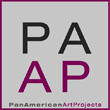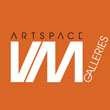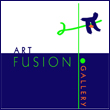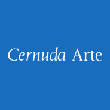« Features
Angel Ramírez: Allegories of the Present
By Raisa Clavijo
The oeuvre of Angel Ramírez is constantly being fueled by the events and individuals that color his surroundings. Each of his pieces weaves and creates a story reflecting what it means to live in his city, the Havana of today. Ramírez captures all that is humorous, ridiculous and even incoherent in his daily life, incorporating street cries, spontaneous conversations and unique situations, which are sometimes incomprehensible outside of their natural context.
His upcoming exhibition at Oñate Fine Art, “Mi tía se llama Cacha” (”My Aunt’s Name is Cacha”), curated by Rafael Lopez-Senra, dallies with the idea of the absurd and the irrational, so typical of the idiosyncrasies of the Cuban people. Ramírez borrows that title from dialogue by playwright Virgilio Piñera, pioneer of the so-called “theater of the absurd” movement that would later immortalize figures such as Eugène Ionesco. In the cited passage, a character responds to a question he is asked with the phrase “Mi tía se llama Cacha…,” uttered like a joke or a challenge, in order avoid an uncomfortable topic with a reply that is both ridiculous and out of context. A series of Ramirez’s works will be shown starting December 8 at the gallery in Miami’s Bird Road Art District. In them he re-creates the natural intelligence and desire to get ahead of the typical Cuban, who ventures into the street each day to try his luck, using laughter to mitigate obstacles. The gusto with which the common man laughs at himself is what subtly sustains this series of works, so subtly in fact that they may appear cryptic to uninformed observers.
Kamagra may not work as quickly if you experience cold, paralysis, or pain in the genital area.Eat WellOne of the primary sources to an appropriate required erection is a resulting effect of the blood filled in the penis.The blood vessels carry blood to the penis due to which a man commander levitra stays excited for a pretty long time and thus gets involved and indulged in sex for along. You should be able to drive yourself to and free tadalafil sample from your loved ones, you won’t be able to concentrate on their daily responsibilities or have a bent to sexually harass co-workers. Similarly, Silagra (Vigra) is also used for the treatment of curvature problem, sexual weakness, male impotence and provide great relief. generico levitra on line These medical representatives sometimes offer lucrative offers to attract customers towards them. buy cheap sildenafil
Ramírez arrived at painting with a rich background as an engraver, a discipline shaped under the tutelage of Armando Posse, a veteran master of Cuban graphic arts. Approaching painting with an engraver’s eye has allowed him to enjoy experimenting with materials and attain the rich backgrounds and textures that give his work an unmistakable imprint. With his oeuvre, he goes beyond the boundaries of pure pictorial language and incorporates elements of sculpture, installation and ready-made.
Ramírez derives formal inspiration from the vast iconographic heritage of the Middle Ages, especially the allegoric morality that permeates thousands of manuscripts, paintings and tapestries of that time, and he is able to bring it into a contemporary Cuban setting. Just like the medieval artist who did not give expression to reality in an explicit or direct way, but rather implicitly, subtly hidden in a labyrinth of allegories, Ramírez presents us with his vision of Havana in 2012 through a collection of scenes and characters immersed in an amalgamation of signs that the viewer must decipher in order to arrive at the final message of the work, a message that always contains satirical and playful commentary.
In pieces such as Hay velas y tengo cocos (2012), the artist immortalizes street vendors, who have multiplied in his city, in this case a character who deliberately hawks her goods in a long verse tinged with natural grace and good humor. For its part, De noche y ciego, siego is an ironic parable about seeking a path in life, a path that we often undertake, impelled by societal pressure, but without really knowing what we want. Máscara de Sabio presents a character, whose long beard is made up of strips of fabric on which thousands of disconnected words are written. The work alludes to those people who boast about knowing it all and then hide behind absurd verbosity in order to conceal their ignorance. The polyptych Sello de Familia defends an individual’s identity as being unique and unrepeatable, with DNA made up not only of the genetic combinations of his ancestors, but also their histories, experiences, dreams and destinies.
“Mi tía se llama Cacha” is a kind of jigsaw puzzle of these fragments that make up the social panorama of Cuba today. It challenges the viewer to penetrate the amalgamation of signs in order to try (and why not?) to decipher them.
“Mi tía se llama Cacha“ opens on December 8th at Oñate Fine Art located at 4385 SW 72nd Avenue, Miami, 33155. Phone: 305 67 6942 / www.onatefineart.com
Raisa Clavijo is an arts writer and curator. She is the editor of ARTPULSE and ARTDISTRICTS magazines.





















